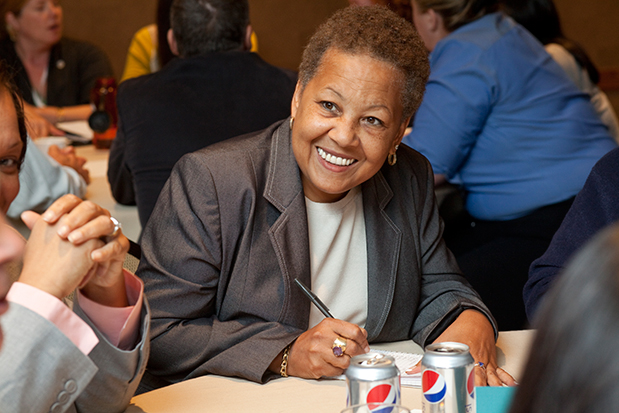
A recent major success with an NGO, Second Nature, supporting the efforts of the American College and University Presidents’ Climate Commitment. Simple meeting documentation with the goal of showing collaboration and cooperation. On a budget, but a reasonable one.
Why are so many people working for free? What are they thinking? When was the last time your network or energy provider gave away their services? Not. Deals, maybe yes. Even Dyson vacuums, a traditional bastion of ‘no discounts no way no how’, is suddenly offering specials. But the sorry truth is that if photographers simply agreed to at least charge minimum wage, our profession would take a might leap forward.
With everybody negotiating everything these days, the problem for photography is that it is both a product and a service, and is often seen as the comparable province of both the 10,000 hour seasoned pro and the rank amateur. Clients, whether retail portrait/event, commercial/advertising or charity, think mostly with product orientation. Products are commodities, open to negotiation. Often clients can’t or don’t want to differentiate between good and mediocre, much less excellent. Photographers know that most of what we do is actually service, the back stories of skill, equipment, people handling, problem solving and creative thought. Up front, a high percentage of clients don’t want to pay for service, because everybody thinks he can be a photographer. The casual hobbyist is equated with the pro. News flash: giving away your pro services is not the same as volunteering your time to serve at a soup kitchen.
The well meaning amateur, no matter how talented, who gives his photography completely gratis, even if it’s to his church, does the entire industry a disservice. However, NGO’s, charities, non-profits and start-ups can offer some really interesting projects, if you’re strong enough to avoid the financial pitfalls.
Essential Rule: Promises of more work (probably for free), referrals and photo credit are the most insulting and prevalent tactics practiced by these organizations. When you hear these words, run the other way.
#1 Do Your Research
If you disagree with the mission statement of the organization, best not go there at all. Is the website well crafted, the logo and information modern and attractive? Check non-profit credentials, such as 501C3 certificate.
#2 If you Donate, Set a Percent, not all
If you hear “no budget” and “volunteer”, don’t waste their time or yours. Before consultation, make sure your contact knows you may be in a position to offer a reduced fee, but will not be working for free.
#3 Period of Discovery
Unrealistic deadlines and vacillating, over the top expectations are a deal breaker, because whatever you bid, you’ll end up working much more than has been revealed to you.
#4 Pin Down Contract before Pushing Pixels
If you’re still in negotiation mode and are asked to develop a full proposal, including time line, procedure, story board and details – don’t do it. We’ve had experience with verbal go aheads. You may spend a day or more on a multi-page proposal brief, and then suddenly the organizers decide they have a member or friend who’ll do it all for free – based on the beautiful outline you’ve provided! If you state a price for proposal, and they balk, you’ll know there was something fishy. If you contract and invoice for a proposal, at least if they change their mind, you’ll have gotten your consultation fee. A plumber gets a trip charge and diagnostic before charging to fix your pipes. Think of yourself as a PR plumber.
#5 Contact and Wording
Write contract in detail of who, what, when, how and how much and get it signed and get a retainer (not a deposit, which is refundable by most statutes),just like any contractor. No exceptions.
#6 Change Orders
Include a statement of extra charges for change orders, additions, and the time to get them done. Remember you’re often working with amateurs who have little concept of that it takes to go back, undo and produce those changes.
#7 Release of Finished Work and Rights
Include a statement that no work is licensed or released, nor may it be used until payment is made in full. Make sure you retain copyright, even if it’s just for portfolio and educational purposes. Be clear if you retain the rights to sell extra images from the shoot as stock.
